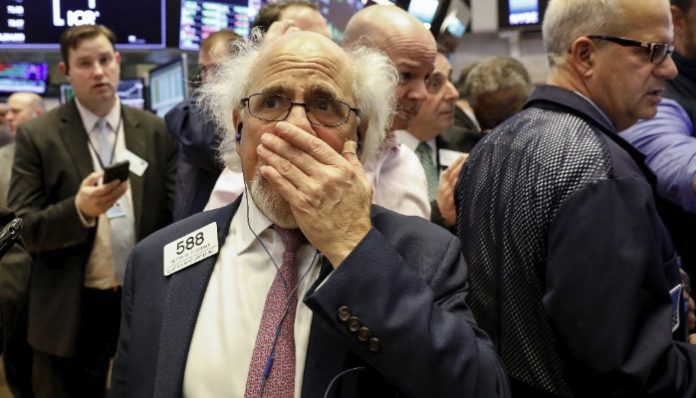The Dow boomed today, led by big bank stocks after they successfully cleared the Federal Reserve’s annual stress test. Adding to the surge in sentiment was a significant upward revision in the first-quarter GDP readings, which alleviated some concerns about a potential recession.
The Dow jumped 0.4% higher through noon while the Nasdaq Composite slipped by 0.2%. The S&P split the difference, trading flat.
Notable gains were seen in JPMorgan Chase, Bank of America, and Wells Fargo, each climbing by over 3%. Other financial stocks, like Charles Schwab, Western Alliance, and Zions Bancorporation also enjoyed a bullish morning.
Today’s GDP revision helped value shares, too, as first-quarter GDP was lifted from +1.3% (which was revised higher from +1.1% two months ago) to +2.0%.
The source of the massive revision? Net trade saw a major increase as exports were revised from 0.58% to 0.86%. Imports were revised, too, from -0.57% to -0.28%. That equaled a net GDP gain of 0.58%, up from 0.01% following the last GDP revision, and it accounts for nearly all of the 1.3% to 2.0% revision this morning. There was no apparent cause for the sudden shift.
Whether the data’s legitimate or not, any benefit it offered Dow stocks also sliced into the Nasdaq Composite. Tech shares fell in response to soaring yields.
“Sectors that do well when the economy is performing well are holding up today. The stress tests yesterday were another good sign that even if the economy softens, banks are much more resilient than what we saw back in the 2008 period,” observed Mona Mahajan, a senior investment strategist with Edward Jones.
With only two trading days left in an impressively good first half of the year, the S&P has risen by 14% this year and is on track for its best monthly performance since January. The Nasdaq Composite, significantly influenced by the rising optimism around artificial intelligence, has seen a near 30% climb, charting its best first half since 1983. The Dow, however, has been lagging, with a mere 2.5% increase.
While the start of 2023 has been strong, Wall Street braces for potential turbulence in the second half.
“Markets don’t go up in a straight line forever. We wouldn’t be surprised to see some period of consolidation or volatility,” Mahajan commented, suggesting that traders should use such volatility to strategize for a broad-based recovery.
Energy and materials stocks joined the upward march, helping their respective S&P sectors rise by around 0.7% each. Names like Steel Dynamics, Mosaic, EQT Corp, Coterra Energy, and Marathon Oil stood out with a climb of more than 1%.
The odds for a July Fed rate hike also increased, setting the stage for a possible rate rise to 5.25%-5.50% by the next meeting on July 26. The CME Group’s FedWatch tool now shows an 86.8% chance of a 25 basis point hike next month.
Treasurys are setting up for a continued downtrend as a result, which could only intensify the already sizable gap between equities and bonds that’s due to close at some point, either via an equity selloff or bond rally.
Given that rates are expected to remain persistently high over the next few months, the former seems far more likely, even if stocks rally again prior to the next big selloff.









